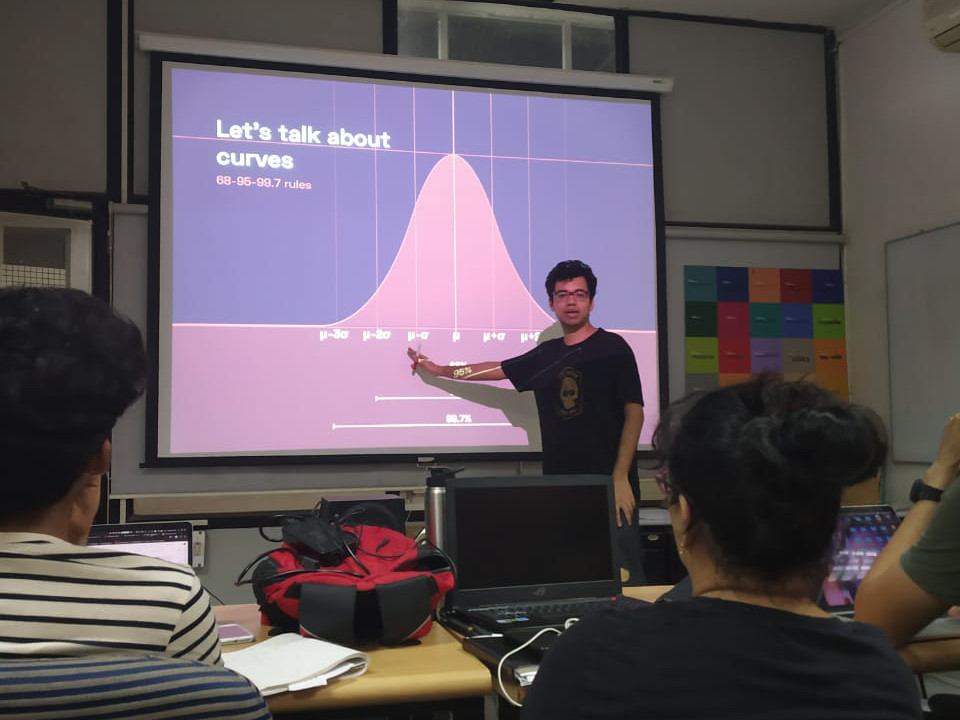Stats for Research Methods
Link to PDF slides
Fair warning: These might not make sense outside of the context of the course since some of these slides refer to material distributed during the course.

Nobody even cracked a smile when I showed this slide, which tells you just how stressed people were about this course. Photo courtesy of Bhawna
In my third semester at IDC, I was a teaching assistant for the Design Research Methods (DRM) course. Students were expected to have prior knowledge of some statistical concepts, but a lot of students hadn’t studied math or statistics in a few years and found the class hard to follow. I taught a supplementary class that started with an intuitive (I hoped) understanding of some of these basic ideas.
Index of terms
Types of Research
- Qualitative
- Quantitative
Types of Research Methods
- Observational - observe and record
- Correlational - relationship b/w 2 variables
- Experimental - consuct a lab experiment
Research question
A question about an area of interest.
Eg. Is the proportion of women in design higher than in engineering?
Hypothesis
A statement about the relationship between 2 variables.
Eg. There is no difference between proportion of women in engineering and design.
Experiment Design
An experiment is conducted to find the effect of one variable on another.
For eg.
- The number of hours of sleep the night before an exam, and the marks scored.
- Two different designs of a chair, and the average rating on a scale of 1 to 10 when people were asked to rank comfort.
Independent variable (or Manipulated variable)
The variable we can control. Eg. hours of sleep, design of chair.
Dependent Variable (or Response variable)
The variable that varies because we changed the independent variable. Eg. marks in test, comfort rating
Control Variable
Circumstance not under investigation that is kept constant while testing.
Random variable
Circumstance not under investigation that is allowed to vary randomly.
Confounding variable
Circumstance not under investigation that has impact on the dependent variable.
So we can say that experiment is conducted to find the effect of changing independent variable on dependent variable, but we might get a fake result because of the confounding variable also impacts the dependent variable.
Levels of a variable
The number of possible states of a variable are called the levels of the variable.
For eg. in our experiment we can have 3, 5, 7, 9 hours of sleep, so hours of sleep variable will have 4 levels.
Between subjects
- A is given design 1. They rank it 5/10.
- B is given design 2. They rank it 6/10.
We can say that B is better, but it’s possible that B was just more generous with the rating and would have given design 1 a 6 as well.
Within subjects
- Subject A is given design 1. They rank it 5/10.
- Subject A is given design 2. They rank it 6/10.
Order effects within subjects
Design 1 and 2 share some elements. If you learn to use 1, 2 is easier to use. Therefore if you use 1 first or 2 first will impact the ranking.
Therefore, we give half of the people design 1 first and the other half design 2 first.



